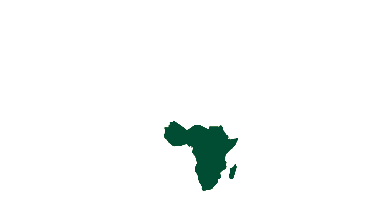2024 • Bremen Overseas Research and Development Association (BORDA) Evaluating decentralized wastewater treatment systems in Dar es Salaam, Tanzania
In 2013, two decentralized wastewater treatment systems (DEWATS) were implemented at the CCBRT maternity hospital in Dar es Salaam, Tanzania, addressing wastewater management in a flood-prone area without sewer connections. These systems treat black and grey water while producing biogas and nutrient-rich treated water for irrigation. The DEWATS approach reduced operational costs compared to conventional systems and provided sustainable wastewater solutions with resource recovery, making it a scalable model for non-sewered areas.
Recovered Materials & Products
Energy
Biogas
Fertilizer
Water
Waste Streams
Wastewater
Greywater
Blackwater
Confirmed countries
United States of America


Background and Context
Location: CCBRT Hospital, Dar es Salaam, Tanzania, a flood-prone area lacking sewer infrastructure.
Resource Stream: Domestic black and grey water from hospital toilets, kitchens, and bathrooms.
Challenges:
- The hospital faced wastewater management issues in an area without sewer systems, necessitating a decentralized solution.
- Biogas utilization was challenging due to inconsistent production and insufficient calorific value for critical applications like hospital kitchens or sterilization.
- High-organic inflows from hospital waste required innovative treatment methods.
- Initial testing of biogas storage and transportation solutions, such as biogas bags and manual compressors, revealed inefficiencies, limiting broader adoption.
Technologies/Methods Used:
- Anaerobic Digestion: Biogas digesters/settlers were used to process black and grey water, producing approximately 12 cubic meters of biogas daily in the larger DEWATS.
- Constructed Wetlands: Treated wastewater further purified through natural wetland systems for reuse in irrigation and firefighting.
- Oxidation Channels: Enhanced oxygenation of treated water to meet environmental standards for discharge.
- Decentralized Design: Systems were designed to operate without external energy, relying solely on locally available resources, reducing operational costs and environmental impact.
Implementation Steps
- System Design: BORDA supervised the design, tailoring DEWATS to the hospital’s needs.
- Construction: Two systems were built in 2013—a larger DEWATS with a capacity of 90 m³/day and a smaller one with 10 m³/day.
- Resource Recovery: Biogas produced was intended for cooking and sterilization but was later redirected to secondary uses due to reliability concerns.
- Sustainable Use: Treated water was utilized for landscape irrigation and firefighting, creating additional environmental benefits.
Outcomes and Impacts
The DEWATS implementation at CCBRT Hospital successfully addressed wastewater management challenges while providing multiple resource recovery benefits. The systems treat up to 100 cubic meters of wastewater daily, with nutrient-rich treated water used for irrigation and firefighting. The larger DEWATS produces 12 cubic meters of biogas per day, which, while not suitable for primary hospital operations, has potential for other applications like water heating and laundry. Cost-effectiveness was a significant advantage. The systems reduced operational costs compared to conventional septic tanks, which would have required frequent desludging. Additionally, the treated wastewater created a niche for urban biodiversity by supporting a pond on the hospital premises.
Lessons Learned
The experience at CCBRT Hospital highlights both the potential and limitations of DEWATS in resource-scarce settings. Biogas production, while beneficial, requires reliable systems and suitable applications for utilization. Challenges in biogas storage and transportation need further innovation to enhance scalability.
The project demonstrated that decentralized wastewater solutions could effectively address local challenges in non-sewered areas. However, proper planning, including stakeholder engagement and technological customization, is critical to success. The integration of low-energy, nature-based treatment components like constructed wetlands provides sustainable outcomes and environmental benefits, making this model replicable in similar contexts globally.
Learn more
The text of the case study is available at the link below:
https://files.grida.no/sdm_downloads/1146-case-study-6/
This case study is extracted from the publication linked below: "Wastewater - Turning Problem to Solution", UNEP (2023)
https://www.unep.org/resources/report/wastewater-turning-problem-solution#:~:text=This%20new%20report%2C%20%E2%80%9CWastewater%20-,blocks%2C%20described%20in%20the%20publication.
Technologies
Anaerobic digestion
Constructed wetlands
Themes
Design
Monitoring, Evaluation and Learning
Technologies